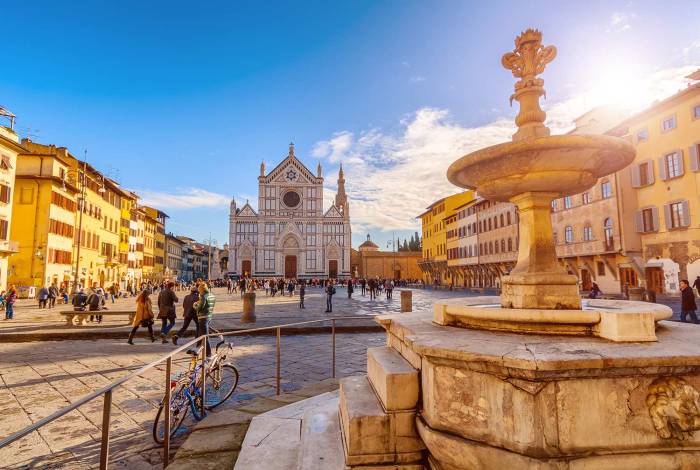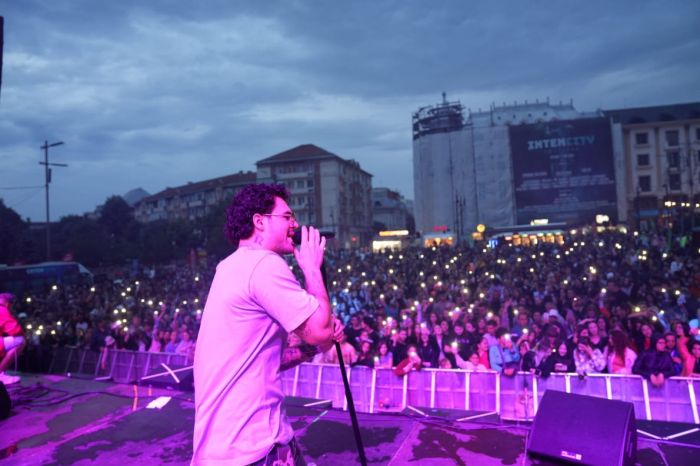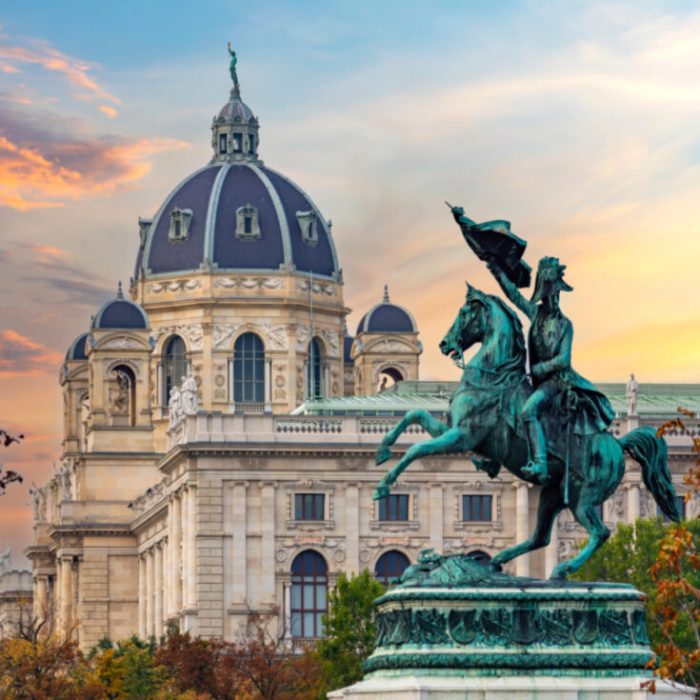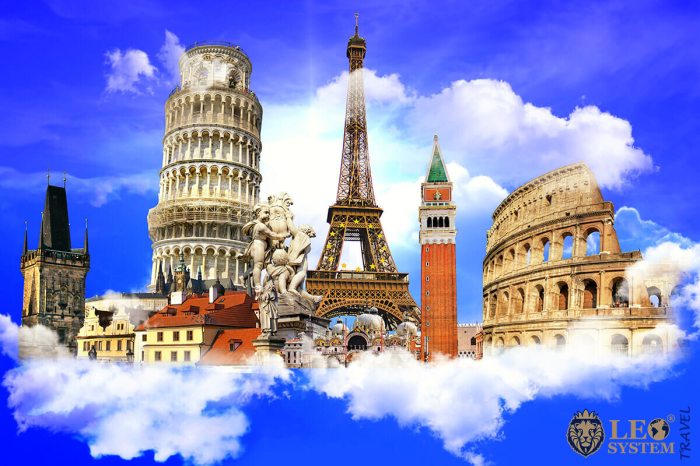Embark on an extraordinary journey through the cultural tapestry of Europe, where ancient heritage sites, captivating art, vibrant performing arts, and cherished traditions intertwine. Cultural tours in Europe offer an immersive experience that transcends mere sightseeing, inviting travelers to delve into the heart and soul of this remarkable continent.
From the iconic landmarks of Paris to the hidden gems of Eastern Europe, each destination promises a unique encounter with the past, present, and future of European culture. Prepare to be captivated by the grandeur of architectural masterpieces, the allure of world-renowned museums, and the rhythm of traditional music that echoes through cobblestone streets.
Cultural Heritage Sites

Europe is a continent steeped in history and culture, boasting a wealth of cultural heritage sites that attract visitors from around the globe. From ancient ruins to architectural masterpieces and UNESCO World Heritage Sites, these sites offer a glimpse into the rich tapestry of European civilization.
The following table provides a comprehensive list of some of the most prominent cultural heritage sites in Europe, organized by location and brief description:
| Site Name | Location | Brief Description |
|---|---|---|
| Acropolis | Athens, Greece | Ancient citadel housing iconic structures such as the Parthenon, Erechtheion, and Temple of Athena Nike. |
| Alhambra | Granada, Spain | Moorish palace complex renowned for its intricate architecture, gardens, and fountains. |
| Angkor Wat | Siem Reap, Cambodia | Vast temple complex built in the 12th century, considered one of the most significant archaeological sites in Southeast Asia. |
| Colosseum | Rome, Italy | Ancient amphitheater that once hosted gladiatorial contests and public spectacles. |
| Eiffel Tower | Paris, France | Iconic iron lattice tower built for the 1889 World’s Fair, offering panoramic views of the city. |
| Hagia Sophia | Istanbul, Turkey | Former Byzantine church and later Ottoman mosque, known for its massive dome and exquisite mosaics. |
| Palace of Versailles | Versailles, France | Lavish royal palace built by King Louis XIV, featuring opulent gardens, fountains, and art collections. |
| Pompeii | Pompeii, Italy | Ancient Roman city preserved in ash after the eruption of Mount Vesuvius in 79 AD. |
| Stonehenge | Wiltshire, England | Prehistoric stone circle dating back to the Neolithic period, shrouded in mystery and intrigue. |
| Taj Mahal | Agra, India | White marble mausoleum built by Mughal emperor Shah Jahan in memory of his wife. |
| Trevi Fountain | Rome, Italy | Baroque fountain known for its iconic coin-tossing tradition, believed to bring good luck. |
| Vatican City | Vatican City, Italy | Independent city-state and the smallest country in the world, home to St. Peter’s Basilica and the Vatican Museums. |
Art and Architecture

Europe is a treasure trove of artistic and architectural marvels, showcasing a diverse array of styles, movements, and masterpieces. From the grandeur of Gothic cathedrals to the vibrant brushstrokes of Impressionist paintings, the continent’s cultural institutions offer a breathtaking journey through the history of art.
Renowned museums like the Louvre in Paris, the Uffizi Gallery in Florence, and the Prado in Madrid house some of the world’s most iconic artworks. These institutions provide a comprehensive overview of artistic movements, from the Renaissance to the Modern era, showcasing the works of masters such as Leonardo da Vinci, Michelangelo, and Pablo Picasso.
Architectural Masterpieces
Europe’s cities are adorned with architectural wonders that reflect the ingenuity and creativity of past civilizations. From the towering spires of Notre Dame Cathedral in Paris to the graceful curves of Antoni Gaudí’s Sagrada Família in Barcelona, these structures are testaments to the skill and artistry of their creators.
- Gothic Cathedrals: These soaring structures, characterized by their pointed arches, ribbed vaults, and stained-glass windows, are architectural marvels that embody the spiritual aspirations of medieval Europe.
- Renaissance Palaces: The Renaissance witnessed a resurgence of classical architecture, as exemplified by the elegant palaces of Florence and Venice. These structures showcase the harmony and proportion that define the Renaissance aesthetic.
- Baroque Churches: The Baroque period brought a new level of exuberance and ornamentation to architecture. Baroque churches, such as St. Peter’s Basilica in Rome, feature elaborate facades, lavish interiors, and dramatic lighting effects.
Artistic Movements
Europe has been the birthplace of numerous artistic movements that have shaped the course of art history. From the realism of the Renaissance to the abstract expressionism of the 20th century, these movements have left an indelible mark on the cultural landscape.
- Renaissance: This period marked a return to classical ideals of beauty and proportion. Artists such as Leonardo da Vinci and Raphael depicted realistic figures in harmonious compositions.
- Impressionism: This 19th-century movement sought to capture the fleeting effects of light and atmosphere. Artists like Claude Monet and Pierre-Auguste Renoir used vibrant colors and loose brushstrokes to create evocative landscapes.
- Cubism: This early 20th-century movement broke down objects into geometric shapes, creating a new and fragmented visual language. Artists like Pablo Picasso and Georges Braque revolutionized the way we perceive art.
Music and Performing Arts

Europe is a cultural hub renowned for its vibrant music and performing arts scene. From traditional folk melodies to classical masterpieces, Europe offers a diverse range of musical experiences. This guide explores the rich tapestry of music and performing arts in Europe, highlighting famous concert halls, opera houses, and theaters.
Europe’s musical heritage is vast and varied, encompassing traditional folk music, classical music, opera, ballet, and contemporary performances. Traditional folk music, deeply rooted in local cultures, showcases the unique rhythms, melodies, and instruments of different regions.
Classical Music
Europe is the birthplace of classical music, with renowned composers such as Mozart, Beethoven, and Tchaikovsky gracing its concert halls. Major orchestras like the Vienna Philharmonic, the Berlin Philharmonic, and the London Symphony Orchestra perform in iconic venues such as the Musikverein in Vienna, the Philharmonie in Berlin, and the Royal Albert Hall in London.
When it comes to cultural tours in Europe, there are plenty of options to choose from. Whether you’re interested in art, history, or architecture, you’re sure to find a tour that fits your interests. And if you’re looking for a truly luxurious experience, be sure to check out our luxury travel tips.
We’ll help you plan the perfect trip, complete with all the amenities and experiences you need to make your journey unforgettable. And once you’ve experienced a cultural tour in Europe, you’ll be hooked! There’s no better way to see the world and learn about different cultures.
Opera
Opera, a captivating fusion of music, drama, and spectacle, has flourished in Europe for centuries. Famous opera houses like La Scala in Milan, the Royal Opera House in London, and the Opéra National de Paris stage renowned productions featuring world-class singers and orchestras.
Ballet
Europe is home to some of the world’s most prestigious ballet companies, including the Royal Ballet in London, the Paris Opera Ballet, and the Bolshoi Ballet in Moscow. These companies perform a repertoire ranging from classical ballets like Swan Lake and The Nutcracker to contemporary works by renowned choreographers.
Contemporary Performances
Europe’s contemporary performing arts scene is thriving, with festivals and venues showcasing cutting-edge dance, theater, and music. The Edinburgh Fringe Festival, one of the largest performing arts festivals in the world, presents a diverse program of experimental and innovative works.
| Event | Location | Dates |
|---|---|---|
| Vienna Philharmonic New Year’s Concert | Vienna, Austria | January 1 |
| Bayreuth Festival | Bayreuth, Germany | July-August |
| Glyndebourne Festival | Glyndebourne, England | May-August |
| Edinburgh Fringe Festival | Edinburgh, Scotland | August |
| Montreux Jazz Festival | Montreux, Switzerland | July |
Local Traditions and Customs

Europe is a melting pot of cultures, and each region has its own unique traditions and customs. These traditions are a reflection of the heritage and identity of the people who live there, and they offer a glimpse into the rich tapestry of European culture.
If you’re looking for a way to immerse yourself in the rich history and culture of Europe, consider embarking on a cultural tour. These tours offer a unique opportunity to explore ancient ruins, visit world-renowned museums, and experience the local cuisine.
And if you’re planning your travels for 2024, be sure to check out our list of the best travel destinations for that year. You’ll find plenty of inspiration for your next cultural adventure in Europe.
Some of the most popular local traditions in Europe include festivals, celebrations, and rituals. These events are often tied to the history, religion, or folklore of the region. For example, the Running of the Bulls in Pamplona, Spain, is a centuries-old tradition that attracts thousands of visitors each year. In Germany, Oktoberfest is a two-week celebration of Bavarian culture that features beer, food, and music. And in Scotland, the Highland Games are a series of athletic competitions that celebrate Scottish heritage.
Traditional Crafts
Traditional crafts are another important part of European culture. These crafts have been passed down from generation to generation, and they often reflect the natural resources and skills of the people who live in the region. For example, in Ireland, there is a long tradition of weaving and knitting. In Italy, glassblowing is a popular craft. And in Switzerland, watchmaking is a highly respected skill.
When planning cultural tours in Europe, it’s crucial to pack light and efficiently. Consider creating a beach holiday packing list as a starting point, focusing on versatile clothing items and comfortable footwear. This approach will ensure you have the essentials for both exploring historical sites and enjoying leisurely strolls along the coastlines during your European adventure.
Cuisine
European cuisine is as diverse as the continent itself. Each region has its own unique dishes and flavors, which are often influenced by the local climate and ingredients. For example, in the Mediterranean countries, olive oil and seafood are common ingredients. In Central Europe, meat and potatoes are often featured in dishes. And in Northern Europe, fish and dairy products are popular.
Folklore
Folklore is a collection of stories, legends, and beliefs that are passed down from generation to generation. These stories often reflect the values and beliefs of the people who live in the region. For example, in Germany, there is a strong tradition of fairy tales. In Ireland, there are many stories about leprechauns and fairies. And in Scotland, there is a rich tradition of ghost stories.
Social Practices
Social practices are the ways in which people interact with each other. These practices can vary greatly from region to region. For example, in some parts of Europe, it is common to greet people with a handshake. In other parts, it is more common to kiss on the cheek. And in some cultures, it is considered rude to make eye contact with strangers.
The local traditions and customs of Europe are a rich and diverse tapestry that reflects the heritage and identity of the people who live there. These traditions are a valuable part of European culture, and they offer a glimpse into the lives of the people who call this continent home.
Literary and Historical Landmarks

Embark on a literary and historical pilgrimage through Europe, tracing the footsteps of renowned authors, poets, and historical figures. Discover iconic landmarks that have shaped the cultural landscape of the continent.
From the cobblestone streets of Edinburgh, where Sir Walter Scott penned his tales, to the serene shores of Lake Como, where Lord Byron found inspiration, each landmark tells a captivating story of literary and historical significance.
Shakespeare’s Globe Theatre, London
Step into the reconstructed Globe Theatre, where William Shakespeare’s plays were first performed. Immerse yourself in the vibrant atmosphere of Elizabethan England as you witness the Bard’s words come to life on stage.
- Reconstructed in 1997 on the original site
- Open-air theatre with a thrust stage and thatched roof
- Offers performances of Shakespeare’s plays and other works
Sustainable Cultural Tourism

Sustainable cultural tourism emphasizes responsible and eco-conscious practices that preserve cultural heritage while minimizing environmental impact. It involves engaging with local communities respectfully, promoting their traditions, and safeguarding the natural environment for future generations.
By adopting sustainable tourism principles, travelers can contribute to the preservation of cultural landmarks, protect ecosystems, and support local economies. This approach fosters a mutually beneficial relationship between tourists and host communities, ensuring the long-term viability of cultural tourism.
Practical Tips for Sustainable Cultural Tours, Cultural tours in Europe
- Respect local customs and traditions. Dress appropriately, be mindful of noise levels, and ask permission before taking photos.
- Support local businesses by patronizing small shops, restaurants, and accommodations that showcase local culture.
- Minimize your carbon footprint by choosing sustainable transportation options, such as walking, cycling, or using public transport.
- Reduce waste by bringing reusable bags, water bottles, and avoiding single-use plastics.
- Learn about the local culture before your trip. This will help you appreciate the nuances and avoid any unintentional faux pas.
Benefits of Sustainable Cultural Tourism
- Preserves cultural heritage for future generations.
- Protects the natural environment and promotes biodiversity.
- Supports local communities and fosters cultural exchange.
- Enhances the overall travel experience by providing a deeper understanding of the destination.
- Promotes responsible tourism practices and raises awareness about sustainability.
Final Wrap-Up

As your cultural odyssey concludes, you will carry with you a profound appreciation for the rich diversity and enduring legacy of European culture. These experiences will not only broaden your horizons but also foster a deeper understanding of our shared human heritage. Embrace the transformative power of cultural tours in Europe and return home forever enriched by the wonders you have witnessed.
Detailed FAQs: Cultural Tours In Europe
What are the benefits of taking a cultural tour in Europe?
Cultural tours offer an immersive and educational experience that allows you to connect with the history, traditions, and people of Europe. They provide expert insights, access to exclusive sites, and opportunities to engage with local communities.
How do I choose the right cultural tour for me?
Consider your interests, budget, and travel style when selecting a cultural tour. Research different tour operators and read reviews to find a tour that aligns with your preferences.
What are some tips for getting the most out of a cultural tour?
Be open-minded, respectful, and curious. Engage with local people, ask questions, and immerse yourself in the culture. Take time to reflect on your experiences and make connections between what you see and your own life.